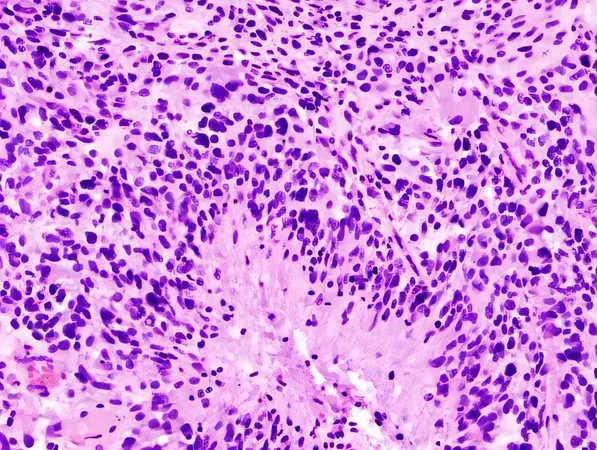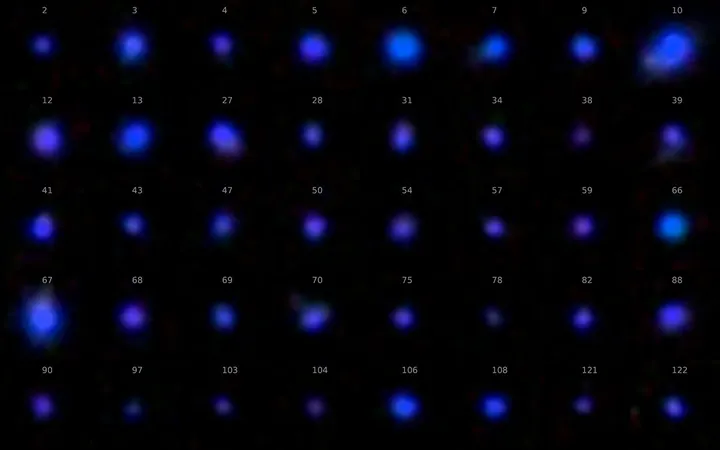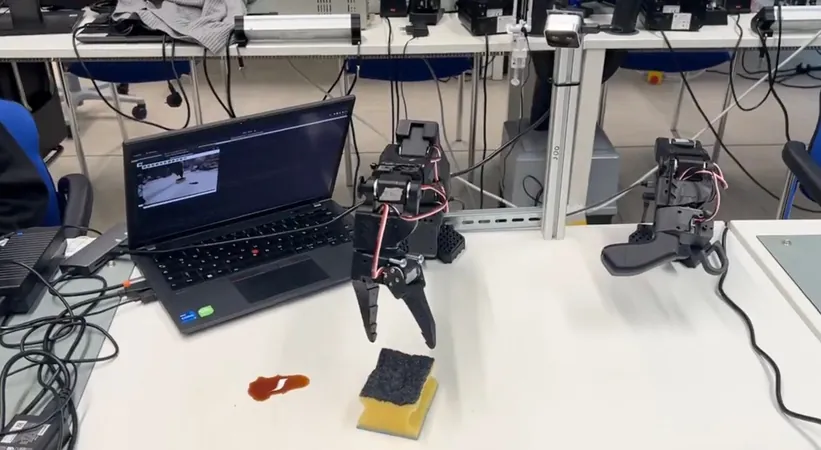
Breakthrough Discovery May Revolutionize Glioblastoma Treatment!
2024-11-04
Author: Arjun
Breakthrough Discovery May Revolutionize Glioblastoma Treatment!
In a groundbreaking study, researchers from the University of Toronto have made significant strides in addressing glioblastoma, a notoriously lethal form of brain cancer that presents formidable challenges for treatment. Their findings reveal new potential targets that could transform the therapeutic landscape for patients suffering from this aggressive disease.
Understanding Glioblastoma
Glioblastoma, the most prevalent type of brain cancer among adults, is notoriously difficult to treat due to the resilience of glioblastoma cancer stem cells. These stem cells are responsible for the growth of tumors and can survive standard therapies, leading to the formation of new, treatment-resistant tumors. This adaptive nature has thwarted conventional approaches, making effective treatment options scarce.
Insights from Researchers
Graham MacLeod, a co-first author of the study and senior research associate at the Donnelly Centre for Cellular and Biomolecular Research, notes, "Glioblastoma tumors have evaded treatment thus far because their composition is highly variable both within and between tumors." Such variability complicates the establishment of a one-size-fits-all treatment approach, as individual tumors can differ significantly in their genetic makeup and response to therapies.
Key Findings from the Study
Published in the esteemed journal *Cancer Research*, this study highlights critical findings regarding the diversity of glioblastoma stem cells. The researchers identified two primary subtypes of these cells: one resembling developmental issues akin to abnormal neurodevelopment, and the other presenting an injury-response phenotype characterized by inflammation. This classification aims to enable tailored treatment strategies that can simultaneously target both subtypes, potentially increasing the efficacy of therapies.
Research Methodology and Results
Building upon previous research that explored the vulnerabilities of glioblastoma cancer stem cells, the team conducted an extensive analysis using CRISPR/Cas9 technology on samples derived from 30 patients, marking the largest study of its kind to date. The results are promising; they uncovered specific genes linked to the proliferation of both cell subtypes that could serve as novel treatment targets. By developing drugs that simultaneously disrupt the activity of these genes, researchers hope to better combat tumor growth.
Significance of Patient-Derived Cell Lines
Fatemeh Molaei, a graduate student and co-first author, emphasized the significance of using patient-derived cell lines. "These cells provide a more accurate representation of actual glioblastoma cells compared to traditional immortalized cell lines," she explained. This method allowed the team to identify OLIG2 and MEK genes for targeting the developmental subtype, while FAK and B1-Integrin genes were implicated for the injury-response subtype.
Clinical Implications of the Findings
Principal investigator Stépahne Angers highlighted the clinical implications of their findings, stating, "Our results will help design new treatments tailored to patients by targeting the predominant cell subtype or both subtypes simultaneously."
Looking Ahead
As researchers continue to delve deeper into glioblastoma's complex biology, this study paves the way for innovative and personalized treatment strategies that could significantly improve patient outcomes. The ability of glioblastoma to adapt to treatment presents ongoing challenges; however, these revelations enhance our understanding of the disease and open doors for future breakthroughs in therapy.
Could This Discovery Be the Turning Point in the Battle Against Glioblastoma?
Stay Tuned for More Insights!




 Brasil (PT)
Brasil (PT)
 Canada (EN)
Canada (EN)
 Chile (ES)
Chile (ES)
 España (ES)
España (ES)
 France (FR)
France (FR)
 Hong Kong (EN)
Hong Kong (EN)
 Italia (IT)
Italia (IT)
 日本 (JA)
日本 (JA)
 Magyarország (HU)
Magyarország (HU)
 Norge (NO)
Norge (NO)
 Polska (PL)
Polska (PL)
 Schweiz (DE)
Schweiz (DE)
 Singapore (EN)
Singapore (EN)
 Sverige (SV)
Sverige (SV)
 Suomi (FI)
Suomi (FI)
 Türkiye (TR)
Türkiye (TR)